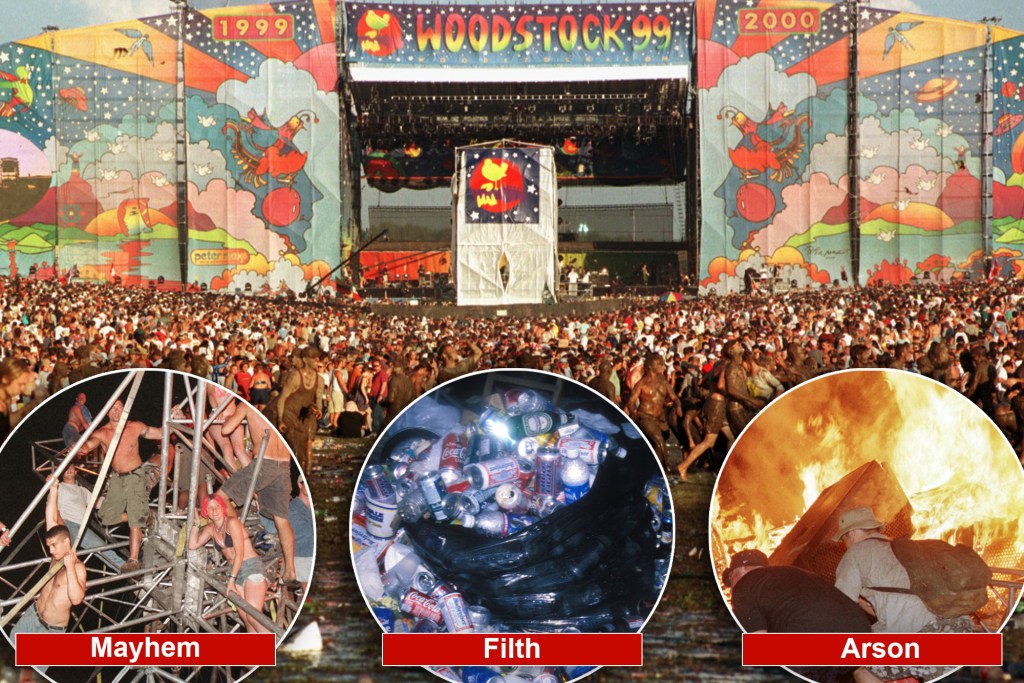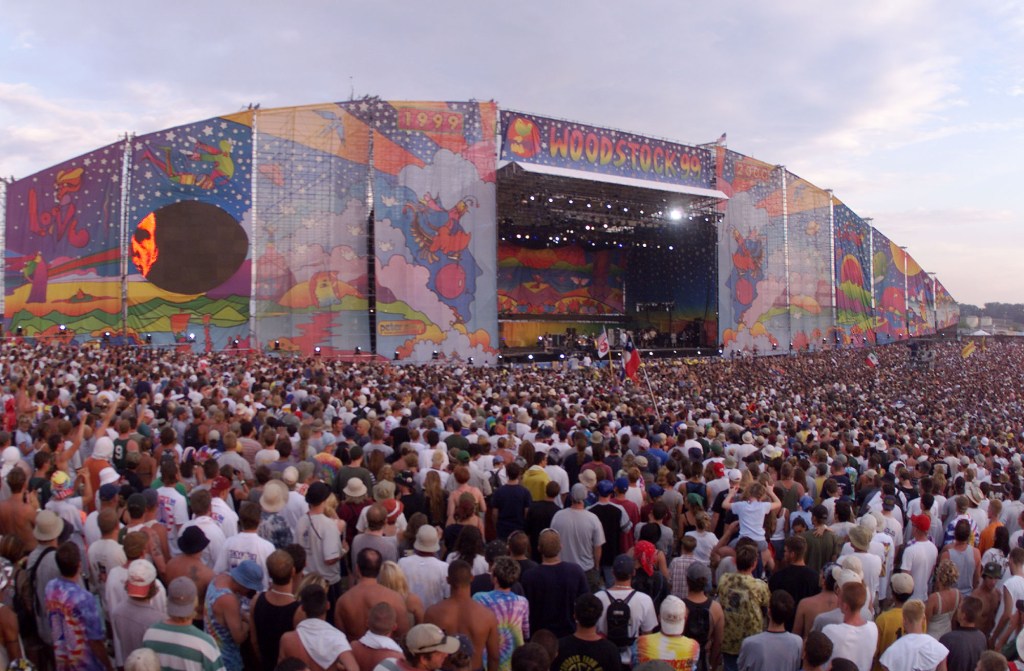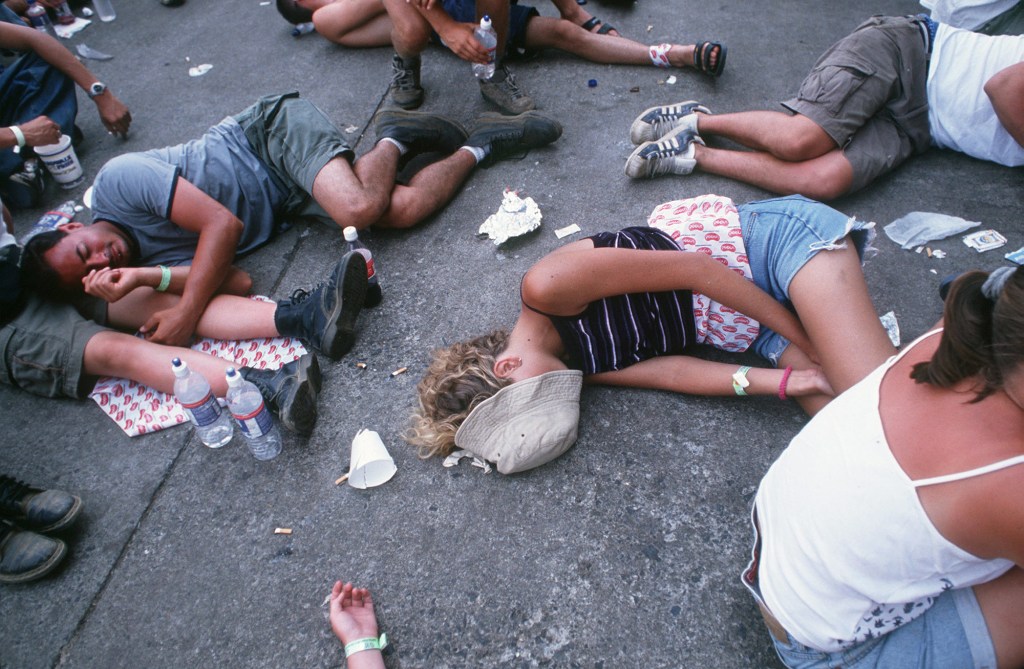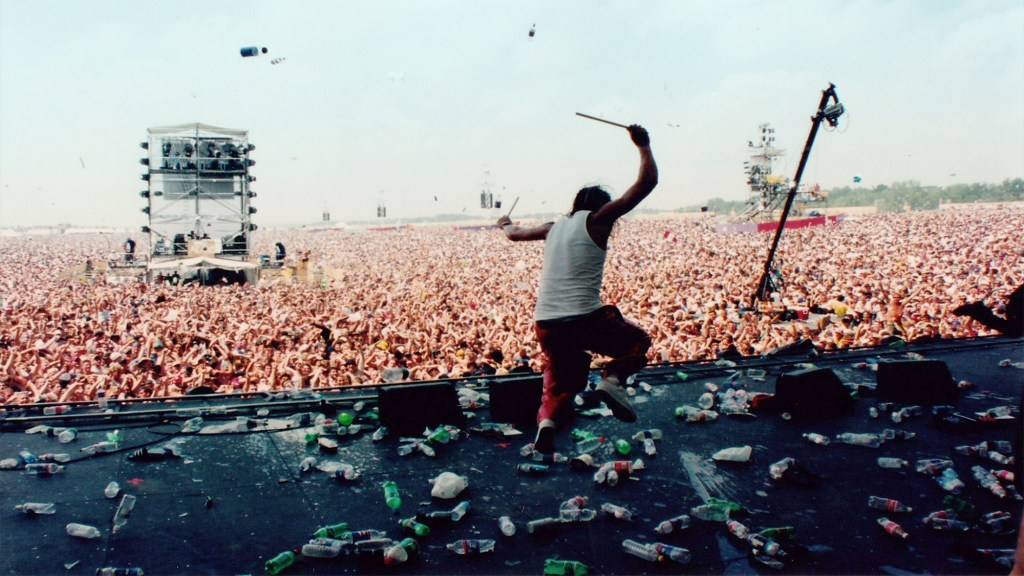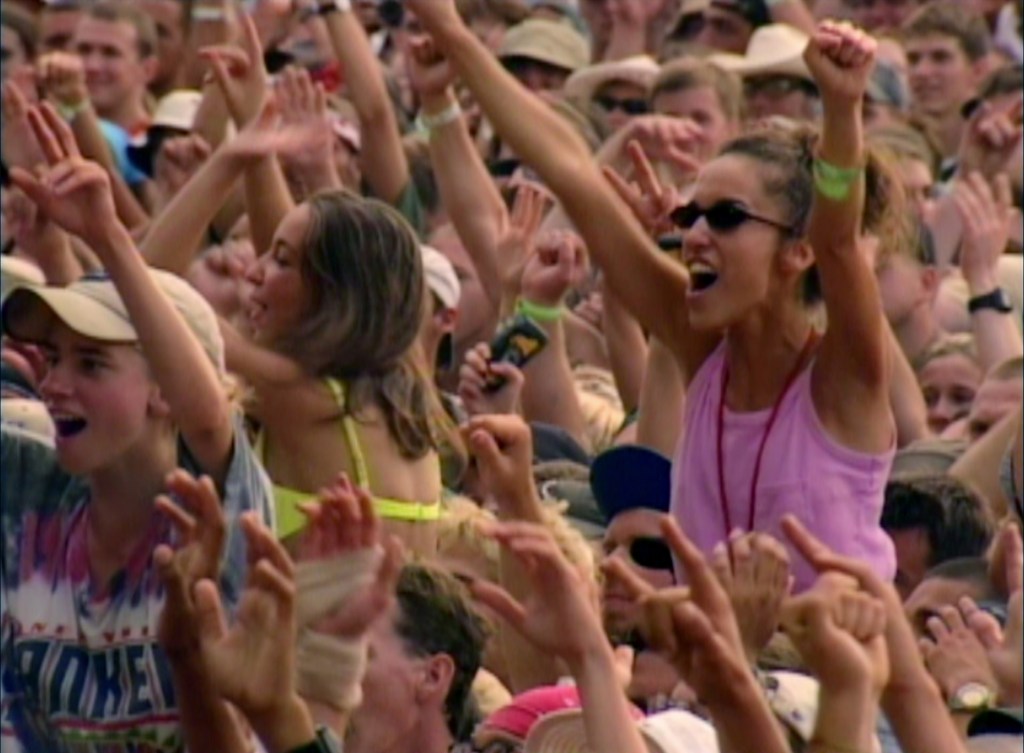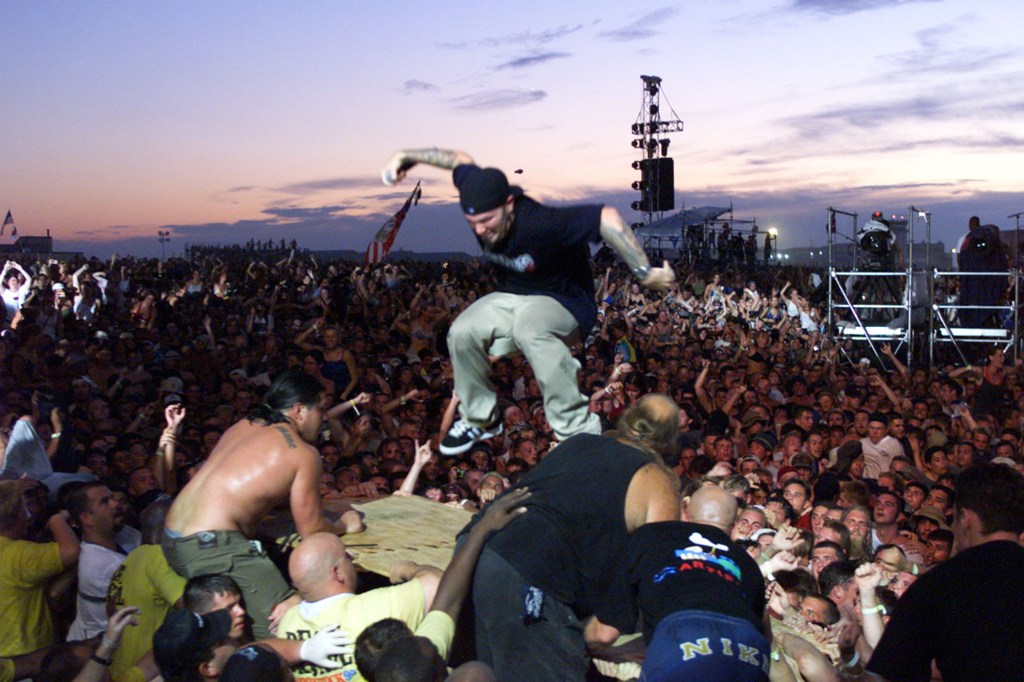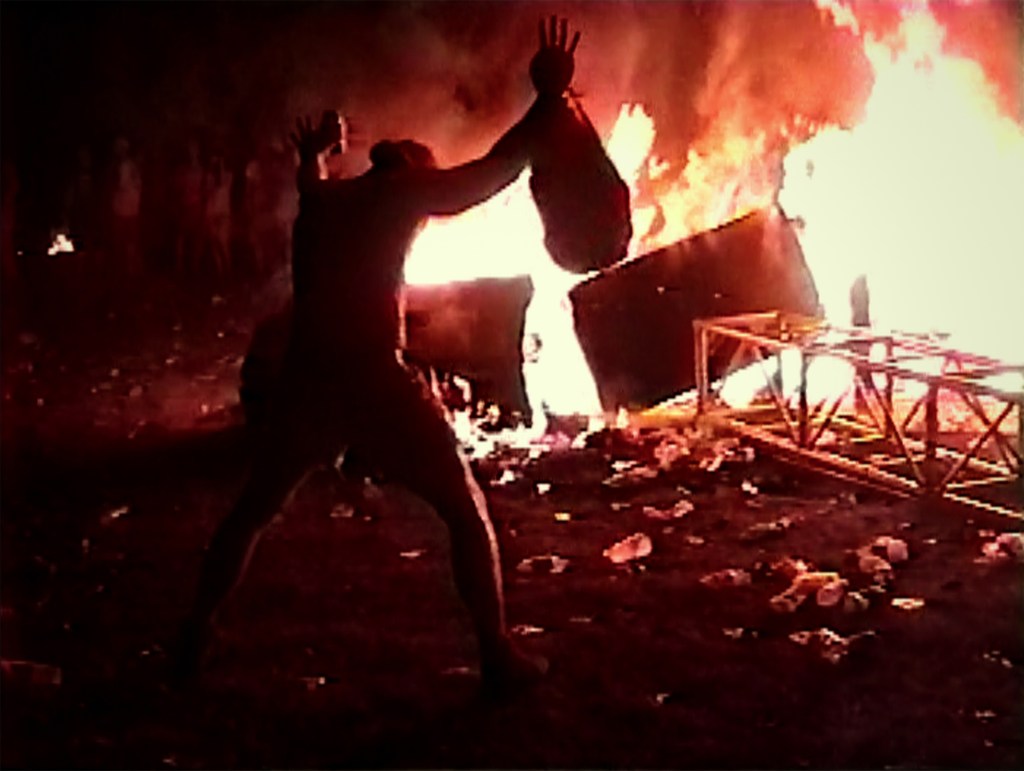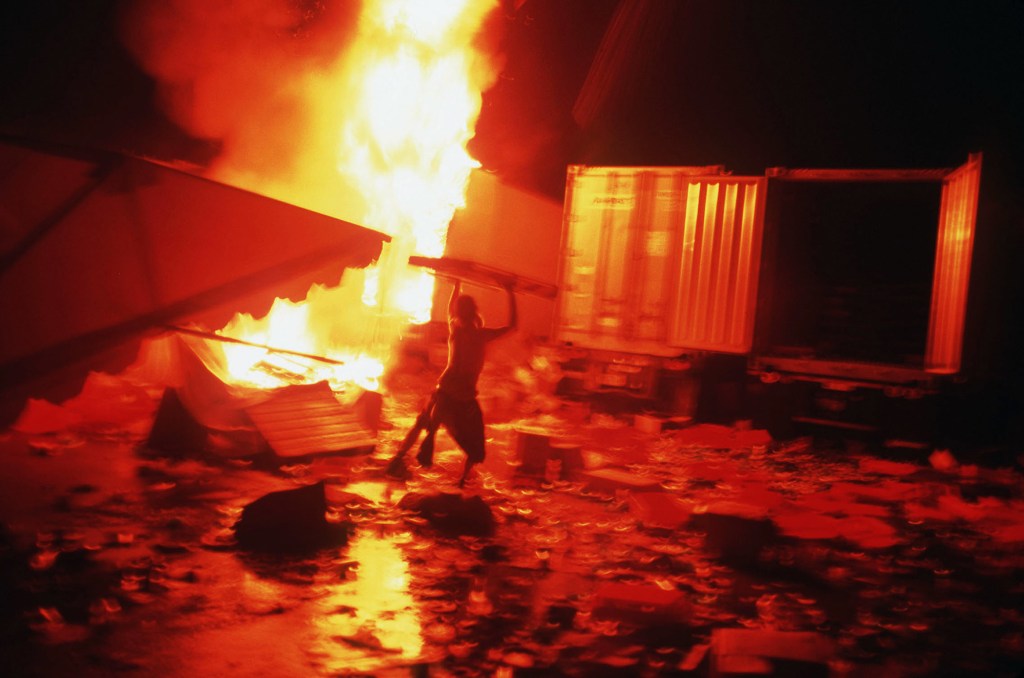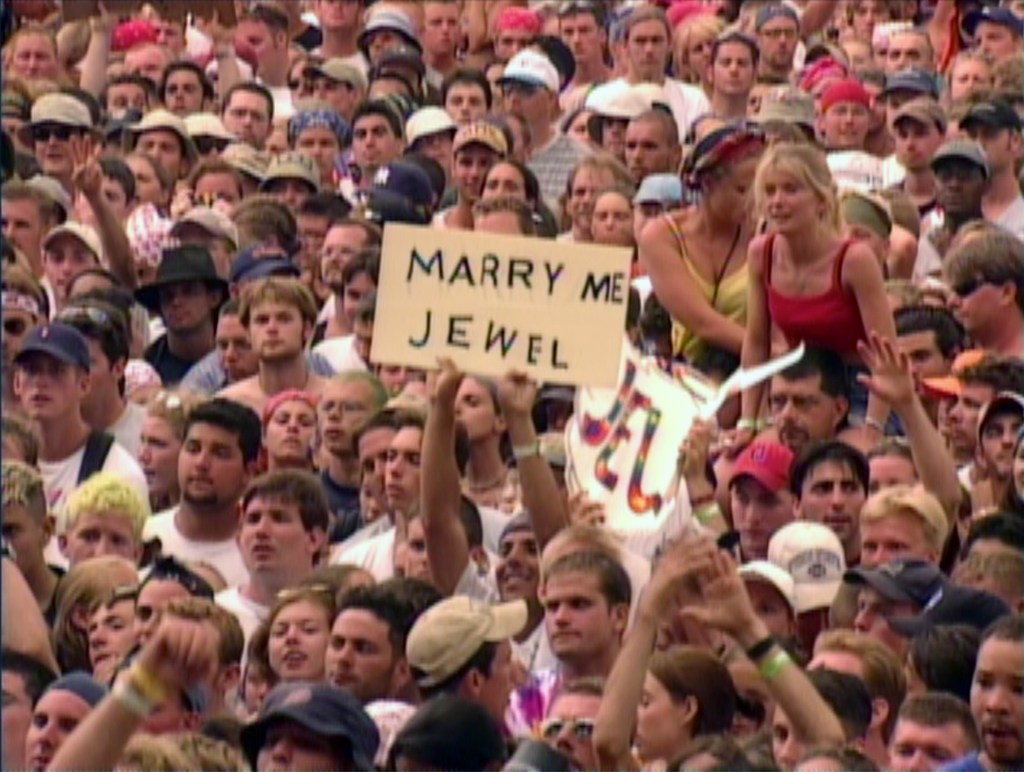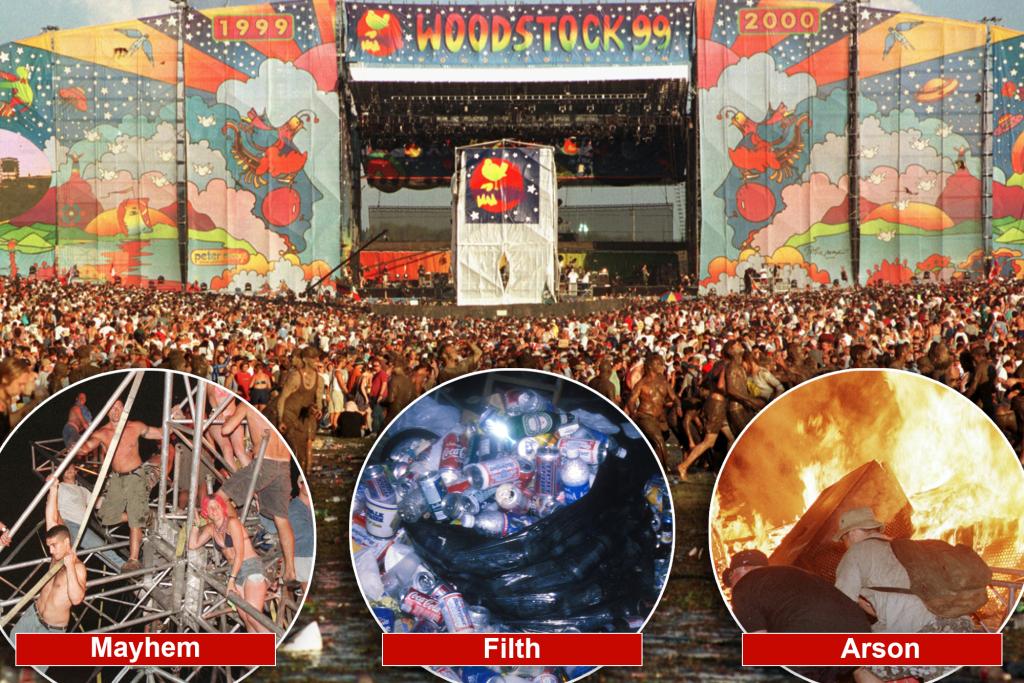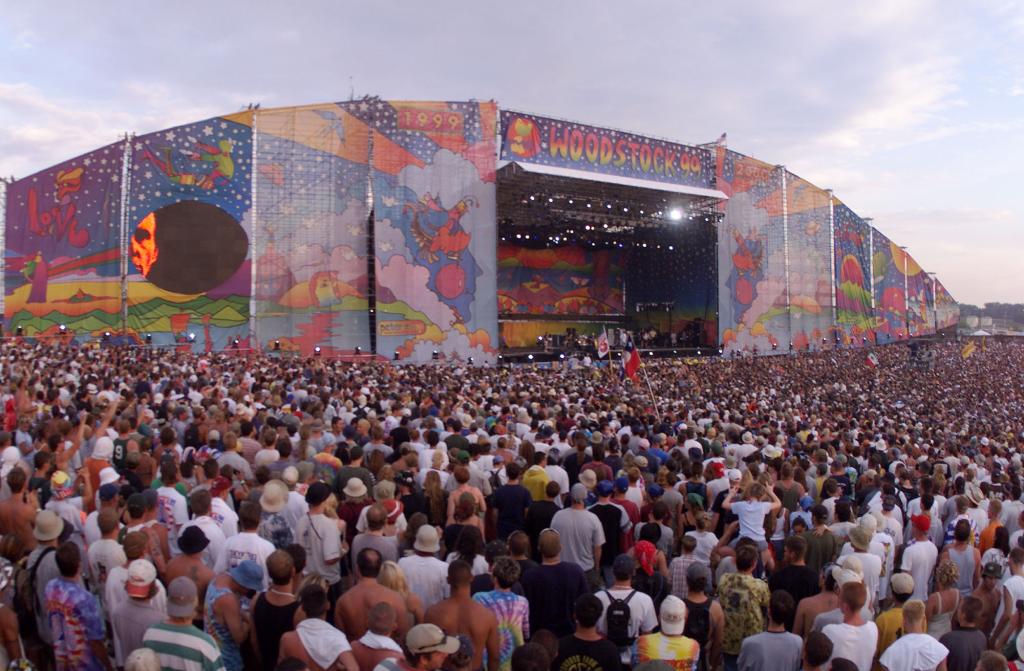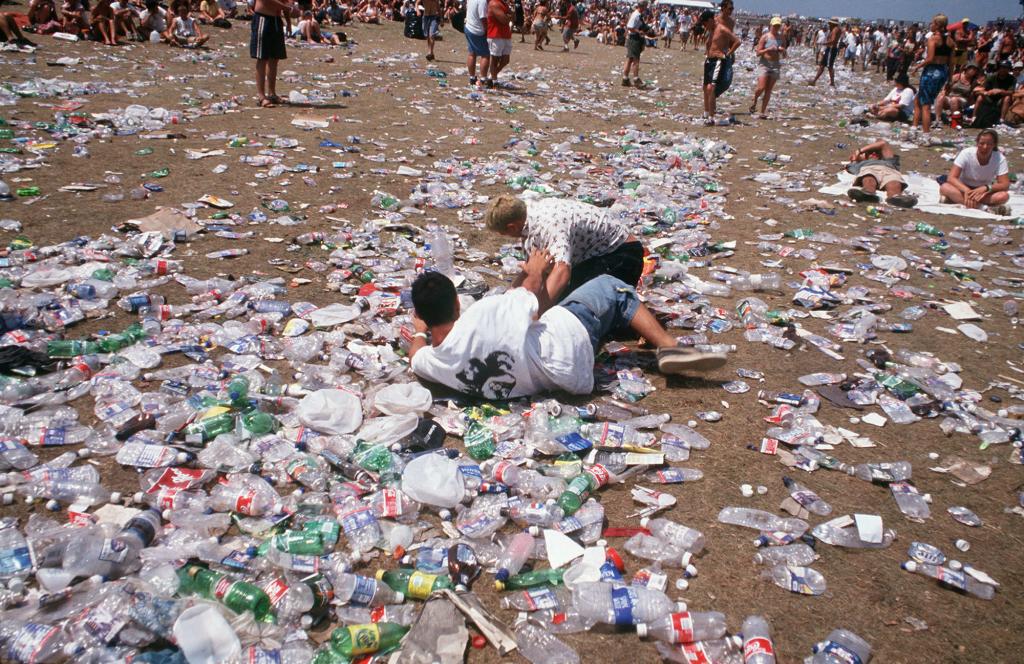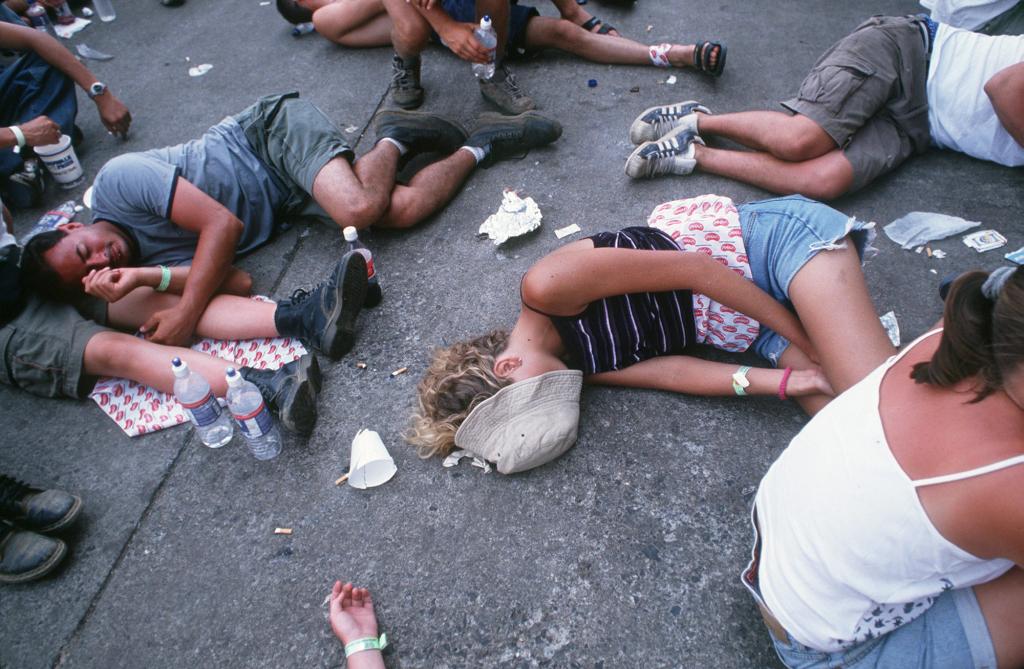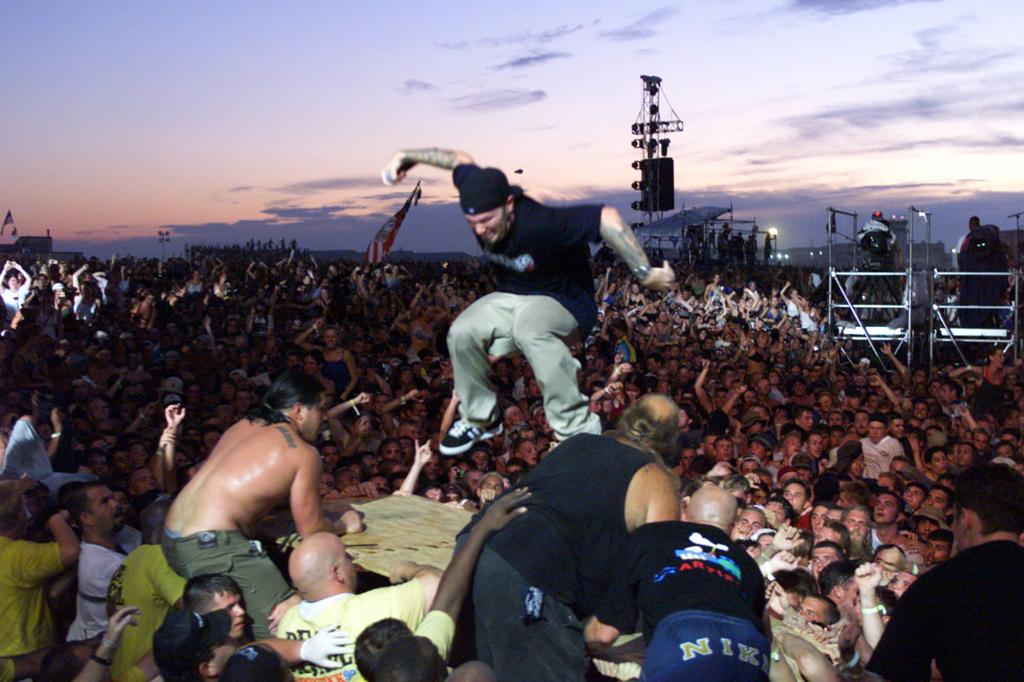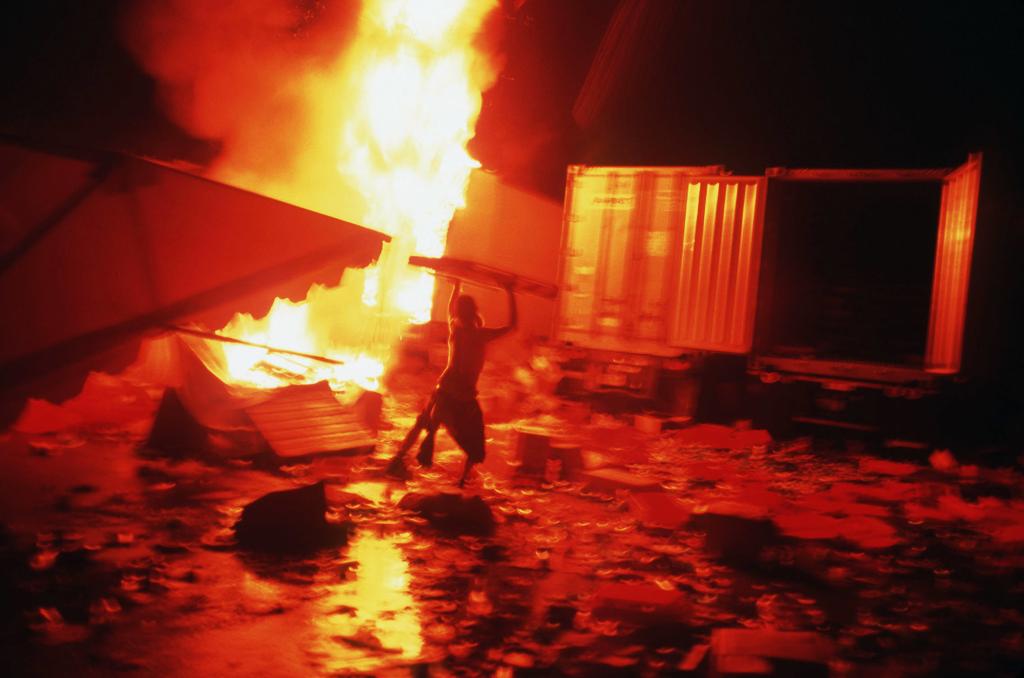Woodstock ’99 documentary: Riots, arson, abuse and the ‘best’ time of their lives
So much for peace and love.
Thirty years after 1969’s iconic Woodstock music festival — three days of euphoric hippie bliss with tunes from The Who, Jimi Hendrix, Janis Joplin and the Grateful Dead in upstate Bethel, NY — original Woodstock founder Michael Lang and his partners attempted to re-create the magic.
Instead, Woodstock ’99 devolved into a catastrophe of arson, riots and sexual assault as over 200,000 people descended on Rome, NY over the course of three days.
Attendees torched audio towers and gas-filled trucks and cars; someone drove a van into the crowd at a packed rave hall; and garbage and debris were pelted at the main stage. New York state troopers and other law enforcement were eventually called in to quell the riot with force.
In the end, three people died — the same number, it should be noted, as at the original — dozens were arrested and more than 1,000 people required medical services. There were also numerous accounts of sexual assaults.
Now, a new three-part Netflix docuseries, “Trainwreck: Woodstock ’99,” premiering Aug. 3, attempts to uncover how it all went so horribly wrong, through the eyes of attendees, workers, talent and Lang himself, a Brooklyn native who died in January at the age of 77.
Woodstock ’99 was “the Fyre Festival predecessor that really happened,” producer Cassie Thornton told The Post.
“It was just a perfect storm,” she said, noting the “blazing hot” temps that neared 100 degrees and “insane budget cuts” that resulted in lax security.
“It was a confluence of events that was almost like an avalanche rolling down the mountain.”
A flawed start
Nobody was expecting things to go off without a hitch: Michael Lang and his partners certainly knew how to throw a concert to remember, but one of the most famous things about the original Woodstock was the logistical nightmare it became.
Much more recently, the press had a field day with Lang’s botched efforts with Woodstock ’94 in Saugerties, NY. Broken fences and poor security meant thousands of attendees never paid. Aggressions boiled over when fans threw mud and tried climbing on stage during a Green Day set. Workers reportedly compared the scene “to a war zone.”
Beyond that, thousands of rain-soaked attendees had to wait in milelong lines for shuttle buses to take them to their cars that were up to 30 miles away — reminiscent of the scores of hippies who abandoned their cars roadside, en route to the original event in neighboring Sullivan County.
Ironically, efforts to address the mistakes of ’94 ended up being the downfall of the 1999 festival, hosted on the “fatally flawed” grounds of the former Griffiss Air Force Base. Organizers hoped that a fortress-like setting would eliminate the security and infrastructure problems. And while it’s true that sneaking onto the decommissioned military installation without paying was more difficult, there were were major issues from the start, like a significant lack of shaded space that only exacerbated festival goers’ misery, as a heat wave seared central New York that late July.
“They were used to Woodstock being synonymous with bad weather and rains. They didn’t even think about what could happen if it was sunny,” the doc’s executive producer Tim Wardle told The Post.
On top of that, weak and understaffed security — dubbed “the peace patrol” — wouldn’t allow people to bring in their own water or beverages. The only options were absurdly marked-up water bottles from vendors or water stations that were widely rumored to be contaminated, after broken pipes and poor water pressure created a hazardous situation. (SPIN Magazine’s 1999 report on the event was famously titled “Don’t Drink The Brown Water.” At the time, and well after the festival, Oneida County health officials insisted the water was safe.)
Porta-potty areas were so unkempt that they looked like a product of nuclear decay. The ground quickly became a swampy nightmare, the resulting “mud” famously suspected to largely consist of fecal matter, while trash cans filled quickly and were barely emptied, resulting in garbage everywhere.
“I think eventually [attendees] just couldn’t take it anymore,” Thornton said.
Insanity ensues
Helping to unleash the pent-up aggression of the increasingly volatile crowd was the festival’s aggressive, heavy rock- and metal-oriented lineup of Korn, Limp Bizkit and Rage Against the Machine.
Korn’s Friday night performance touched off the hostile audience, with extreme mosh pits forming in the main stage area.
“I come walking out and I see that f–king crowd, I’m like what the flying f–k. When you see it with your own eyes, it’s just ten times more shocking … I look over and I see just waves [of people moshing and rocking] as the sound traveled all the way to the back,” Korn lead singer Jonathan Davis says in the doc.
“They were completely unprepared. It was like, let’s just get a quarter-million people together and let’s see what happens.”
But on Saturday it became apparent to the thousands in attendance that they were being kept in borderline inhumane conditions — and it quickly showed.
Garbage was being thrown on stage all day, while sweltering fans — many of whom ended up needing medical care for exhaustion and dehydration — began tearing off their clothes.
By the time Limp Bizkit hit the stage shortly after 8 p.m., the crowd was breaking off pieces of plywood from surrounding walls and using them to crowd surf while others began scaling the massive soundstage, rocking it back and forth.
Frontman Fred Durst not only encouraged much of the antics, but hopped on a floating board himself.
“They wanna ask us, to ask you to mellow out a little bit. They say too many people are getting hurt. Don’t let nobody get hurt. But I don’t think you should mellow out. Mellowing out, that’s what Alanis Morissette had you motherf—rs do,” Durst told the crowd about a third of the way through his performance. (Morissette had opened for the band, performing what MTV referred to as a “confident” if relatively low-key set, in front of a mostly “apathetic” crowd.)
During the chaos of the performance, cameras caught a man groping a topless woman. By the festival’s end, four incidents of sexual assault were being investigated, according to the docuseries.
Later that night, inside a hangar used for electronic music raves, an unidentified individual drove a truck through the crowd during a Fatboy Slim set. Widely reported as an accidental event, people climbed on top of the slow-moving vehicle, and the set came to a screeching halt.
“All my crew and the people from the record company were properly rattled. I could see in their eyes they weren’t being overdramatic,” Fatboy Slim says in the series, noting how he and his team fled the festival and slept at a nearby airport until their morning flight.
“S–t’s kicking off, and it’s kind of not safe.”
Burn it down
While many fed-up attendees peaced out and left the festival grounds for good at the first sobering light of Sunday, some of those who remained were out for blood.
A third day in the blistering heat with no shade, limited access to safe drinking water, nauseating conditions and price gouging had all catalyzed Woodstock 99’s less-than-grand finale.
Coinciding with the Red Hot Chili Peppers closing performance that evening — during which bassist Michael “Flea” Balzary performed nude — promoter Lang and his team had the bright idea to hand out candles for a vigil to protest gun violence. In the hands of the disgruntled, exhausted festival-goers, it was a disaster waiting to happen.
Cameras could pick up various small blazes set in the crowd during their set; the band only fueled the situation by covering Hendrix’s tune “Fire” during an encore, supposedly in tribute to the late artist and Woodstock icon.
“You wanna do it, you wanna do it? F–k yeah!” the Chili Peppers screamed on stage, before launching into the song.
Small fires became larger fires; by the end of the set, marauding fans were torching anything and everything in their way.
Staff were evacuated for their own safety as cars were overturned and parked truck trailers were set ablaze, only to then explode when the flames had reached their gas tanks.
A garrison of state troopers was summoned to break up the rioting, catching festival goers attempting to break into ATM machines and looting vendor areas.
By the end, there were reports of 1,200 injuries and 44 arrests, one for sexual assault, according to Insider. There were three fatalities — a 44-year-old man at the campgrounds who had a pre-existing heart condition, one heat-related death at a hospital in Syracuse, and one traffic fatality after the event, miles from the site.
A legacy tainted — or not?
Fatally flawed or no, some still look at Woodstock ’99 as one of the greatest long weekends of their lives.
“We asked the people who appear in [the documentary], those kids, ‘Did you have a good time ultimately?’ expecting them to say, ‘No, it was a disaster. It was terrible,’” said Wardle. “And then it really surprised us. They’re like, ‘No, it’s the best thing I’ve ever done in my life!’”
For Lang, used to a mix of adoration and criticism beginning with the original 1969 event, the failings of his third Woodstock attempt were a difficult pill to swallow.
“The way [1999] sort of sits in my memory is a lost opportunity,” Lang says in the doc, assigning a share of the blame to the festival attendees.
“I think in the ’90s, kids were in a different headspace. There were a–holes in the crowd. You can’t vet the people who buy your tickets, you just can’t.”
“I think he did accept some responsibility for what happened and accepted that it damaged the reputation of [the original] Woodstock,” Wardle said of Lang, who died of non-Hodgkin’s Lymphoma, months after filming his interview.
The executive producer said that apps like Instagram and TikTok are actually a strong deterrent from there being another catastrophe on the scale of Rome 23 years ago.
“Today everyone would just be ripping the place to shreds on social media [and] would feel they’ve vented and got it out there,” Wardle said. “I definitely don’t think we’d have a ’99 again.”
